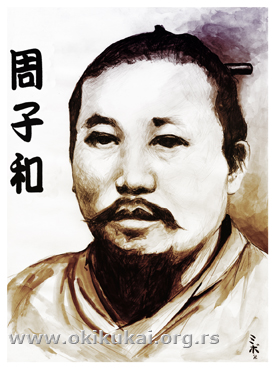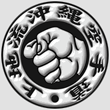• FOUNDERS / BIOGRAPHY
SHU SHI WA

An assumption is that Shu Shi Wa was a founder of the system of PANGAI-NOON (“half hard – half soft” or otherwise known as the system of the “tiger, dragon & crane”). Shu Shi Wa was born in a wealthy provincial family near Nanyu in 1874. He started to learn medicine, Chinese literature and calligraphy, and practiced Martial Arts as very young. At first, his father enrolled him in the Martial Arts school of Zhou Bei (the Master of the "South Shaolin Fist" & a teacher of Chinese literature). Later, when Shu Shi Wa's father was helped by He Xi Di (a Martial Arts Master from Sandong province) to open a school in Nanju Shu Shi Wa became one of his students. He Xi Di was very famous for techniques of "iron arms" and "steel palms", having had a very good knowledge of medicine and calligraphy, too.
Some parts of the Shu Shi Wa's biography are unknown. Some say that he became a monk in the temple of Nansoya as an adolescent, that he received a name Shosei, that he practiced under patronage of the chief monk Jinzen, and that he was even a member of the secret society I-HO TUAN *) which fought for dethroning of the Ching dynasty and for restoration of the Ming dynasty in order to prevent foreign influence.
It is known that Shu Shi Wa had served in the Fuchanshin Shaolin Temple in Foochow, under assumed (nick) names of "the priest of the 36th room", "eternal breadth" and "a Taoist of Mon-Hoon" ('Xun-shan Daoze', because he was always dressed as a Taoist priest). Also, he ran his own school of Martial Arts, referring to his style as "PANGAI-NOON" ("half hard, half soft"). He knew very well all 5 fighting styles, as well as the techniques of "tiger's talon". Shu Shi Wa had several students from whom only Ueci Kanbun is well known today.
Shu Shi Wa was famous as a extraordinary Martial Art Master but also as a "man of medicine" (because he gathered sanative herbs and made elixirs). Also he was engaged in calligraphy, painting and poetry. His pictures of tigers were in great demand and expensive, as well as his calligraphic banners for stores and houses.
In 1926 Shu Shi Wa fell ill and in a short while died of an abdominal illness at the age of 52.
Many imperial countries wanted to establish their domination in China after it opened the borders to the outside world. As a result, many wars broke out.
The First ANGLO-CHINESE WAR (1840-1842) was initiated by Great Britain. It is also known as "THE OPIUM WAR". After victory of Great Britain, China was under obligation by the Peace Declaration signed in Nanching to hand over Hong Kong to Great Britain until 1999.
The 2nd and 3rd ANGLO-CHINESE WAR (1856-1860) were initiated by imperial countries. These two wars resulted in an exclusive right of Great Britain & France to trade in China. Similar obligations were imposed by Imperial Russia and USA.
In a situation of predominant foreign influence in China, the Masters of the Martial Arts set up a secret patriotic society under the name of "I-HO TUAN", which inspired peasants and the cities’ poor to stand up against foreigners and regime of the Ching dynasty. This rebel is known as "THE BOXERS’ REBELION" (1898-1901). The murder of the German Ambassador Fon Katler was an excuse for common intervention by Great Britain, Germany, Imperial Russia, Japan and USA. The rebel was quashed in blood.
The Temple in Nansoya (built in 1768), was used as an asylum for members of "I-HO TUAN" from south, and refugee rebels from north of China.
| • • • |
